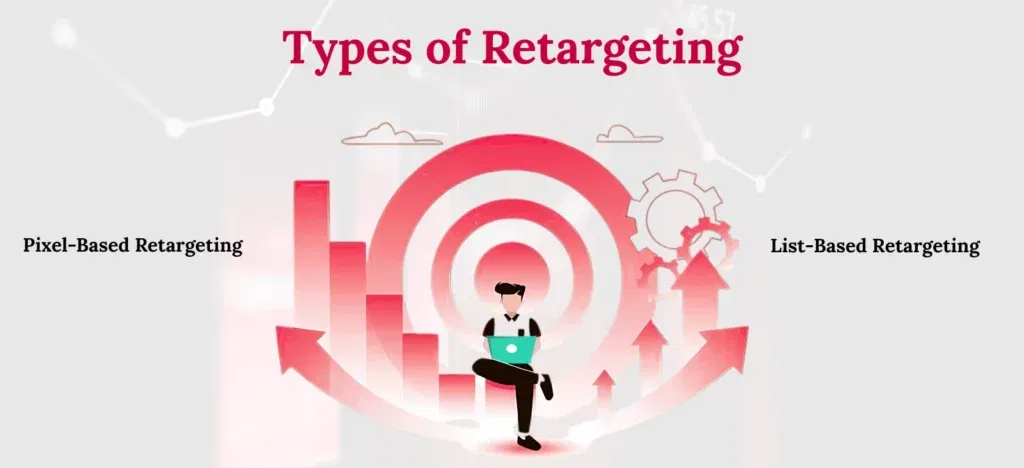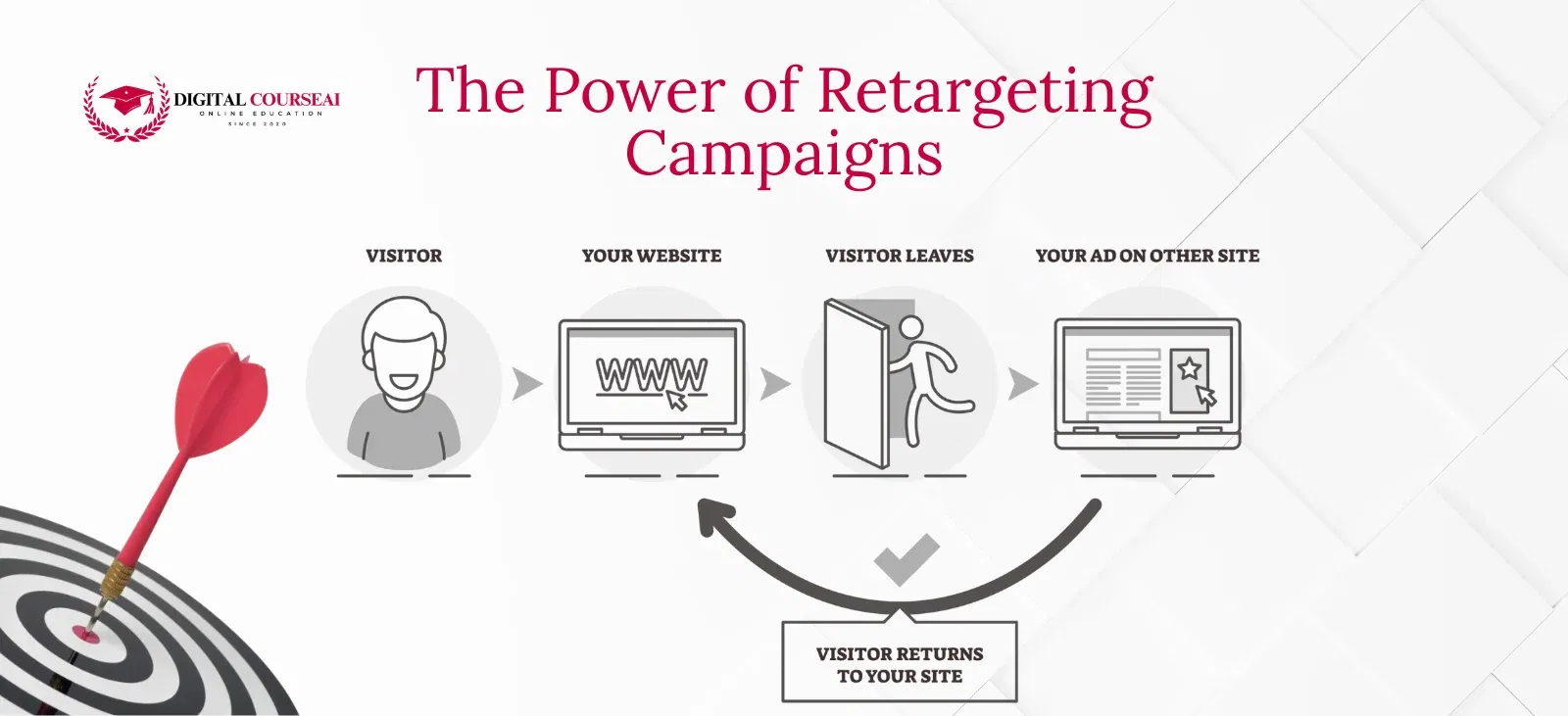Understanding the Basics
In the ever-changing environment of digital marketing, obtaining a customer’s attention is only half the battle. Much of the difficulty comes from retaining. This is where retargeting campaigns come into play.
That attention and converting a lead’s first interest into a completed sale. By re-engaging users who have already interacted with your brand and shown interest in your services or products.
You have a much greater chance of conversion and creating customer loyalty.
What are retargeting campaigns?
Retargeting campaigns are also commonly called remarketing campaigns. It is a powerful marketing channel that allows you to re-advertise to people. Those who have already been to your website or mobile app, as well as anyone from your existing customer list.
It operates on the fundamental concept that a user who has engaged with your brand. Before will almost always convert to a conversion action quicker than someone who is completely new or a cold lead.
The way retargeting works is brilliant. When a user visits your website, a piece of code that is often referred to as a “pixel” (or a “tag”) drops in an anonymous cookie in the user’s browser.
A cookie does not track any of the users’ personal data information; it simply provides a reference point.
As the user browses elsewhere online, the retargeting platform sees that the user has the cookie and will serve your ads to the user.
Thus, you can have a slight chance of making sure that the user remembers your brand and possibly comes back to your site for a purchase.
The Core Benefits of Retargeting Campaigns
Running retargeting campaigns can have many advantages to improve your marketing ROI.
Higher Conversion Rates:
One of the biggest advantages of retargeting is its ability to increase conversion rates. However, retargeting campaigns are likely to be advertising to a “warm” audience.
Meanwhile, People who have already visited your site and are somewhat familiar with your brand and product.
You know that you are advertising to those who are already interested. This familiarity will reduce sales friction and increase the likelihood of a purchase.
Increased Brand Awareness:
Even if a user does not convert into a customer immediately. Retargeting with your ad repeatedly across the Internet.
It helps to remind them of your brand, keeping you and the possibility of a purchase fresh in their minds. This will help them think of you when they are ready to make a purchase in the future.
Cost-Effectiveness:
Retargeting is a great use of your advertising budget. Particularly in contrast to other methods, like many Google or Facebook advertisements.
The tactics that spend money on broad, general audiences, most of which are never going to buy from you.
Retargeting gets your money in front of a qualified group of customers. So it is a more efficient way of employing your ad budget and more likely to produce a positive return.
Personalized and Relevant Messaging:
There is so much possible personalization with retargeting campaigns. Audiences can be segmented based on their past behavior on your site.
For instance, you can show a specific pair of shoes to a person who visited that specific shoe or give a price discount to someone who abandoned their cart.
This level of personalization makes it easier for audiences to view your ads as relevant and useful.
Types of Retargeting

There are two basic methods for implementing retargeting, each with its own advantages:
Pixel-Based Retargeting
Pixel-based retargeting is the most common form of retargeting. Pixel-based retargeting means placing a JavaScript code (the pixel) on your website. Subsequently, dropping a cookie on the browsers of your anonymous website visitors.
This cookie enables you to create dynamic ad campaigns that target. These visitors are across all types of ad networks, such as Google, Facebook, and Instagram.
List-Based Retargeting
List-based retargeting is more direct. Your marketing team will upload a list with contact information, such as email addresses, to the advertising platform. The advertising platform will then deliver your ads to the matched users.
That type of retargeting is superb for re-engaging older customers. Performing a product launch to existing customers or winning back inactive subscribers.
How to Build an Effective Retargeting Campaign
Install Your Retargeting Pixel:
When retargeting, step one is to put the tracking pixel on every page of your website.
For example, Facebook Pixel, Google Ads remarketing tag, etc. This process will begin gathering audience data!
Define and Segment Your Audience:
Instead of serving the same ad to all your website visitors. You want to segment your audience by behavior. Common segments include:
Cart Abandoners:
Users who added items to their shopping cart but did not purchase.
- Product Viewers: Users who viewed a product page.
- Previous Purchasers: Users that have before purchased from you and are existing customers.
- High-Value Pages: User viewing your pricing page or a certain service page.
Create Compelling Ad Creatives:
Your ads should be very targeted and have a great call-to-action (CTA). A discount or free shipping (or both) is a great idea to encourage a user to come back and complete their purchase.
For example, for a cart abandoner, your ad could show the exact product. They were thinking about what they had the potential to purchase.
Set Your Budget and Bidding Strategy:
Choose your budget (For example, what you are willing to spend), and select the bid strategy that works best for you.
Given you are capitalizing on a warmer audience, you can often be a more aggressive bidder versus a cold-audience campaign.
Choose Your Platforms:
Select your platforms you feel are most suited for your campaign. Google’s Display Network has many publishers.
It should cast a wide net beyond most social media sites as well. But for visual, highly personalized ads, a social network like Facebook or Instagram is an excellent choice.
Measure and Optimize:
Unlike other marketing strategies, retargeting is not a “set and forget” method. It is critical to track your campaign’s performance.
Evaluated through its conversion rate, CTR, and ROAS. You need to track these metrics and improve your audience segments, creatives, and bidding to further enhance your results.
Real-World Applications of Retargeting
With an understanding of the concept of retargeting, many business scenarios can be applied.
E-commerce
For example, a user views a specific beret and does not buy it. After some time, they are served retargeting ads for the same beret. This time, with a stock alert sign, which motivates them to complete the transaction.
Saab/B2B
Consider a prospective customer who goes to your demo but does not schedule a demo. You can retarget your ads by placing a customer testimonial or a case study explaining the business’s value to the user.
Promotion
If someone visited a webinar but did not sign up for it, we can retarget them to sign up before the time limit. The ad can showcase a countdown timer and turbo boost timer and explain the value of the presentation.
Up and Cross Selling
For existing customers, ads can be used to resell. They are already complementary products or services, thus increasing the customers’ lifetime value.
Conclusion
In conclusion, retargeting is not just a fad; it is a core component of all digital marketing.
If you want to learn how to build and manage a complete campaign. Enrolling in an advanced digital marketing course with Digital CourseAi. It can help you master retargeting strategies along with other essential marketing techniques.
If you are able to regain the interest of a prequalified audience:
- You can turn casual visitors into repeat loyal customers.
- You will greatly boost conversion rates.
- You will more effectively spend your advertising dollars.
Executing successful retargeting campaigns should be one of the first things. But, any business learns to broaden their chances of success in the digital marketplace.

